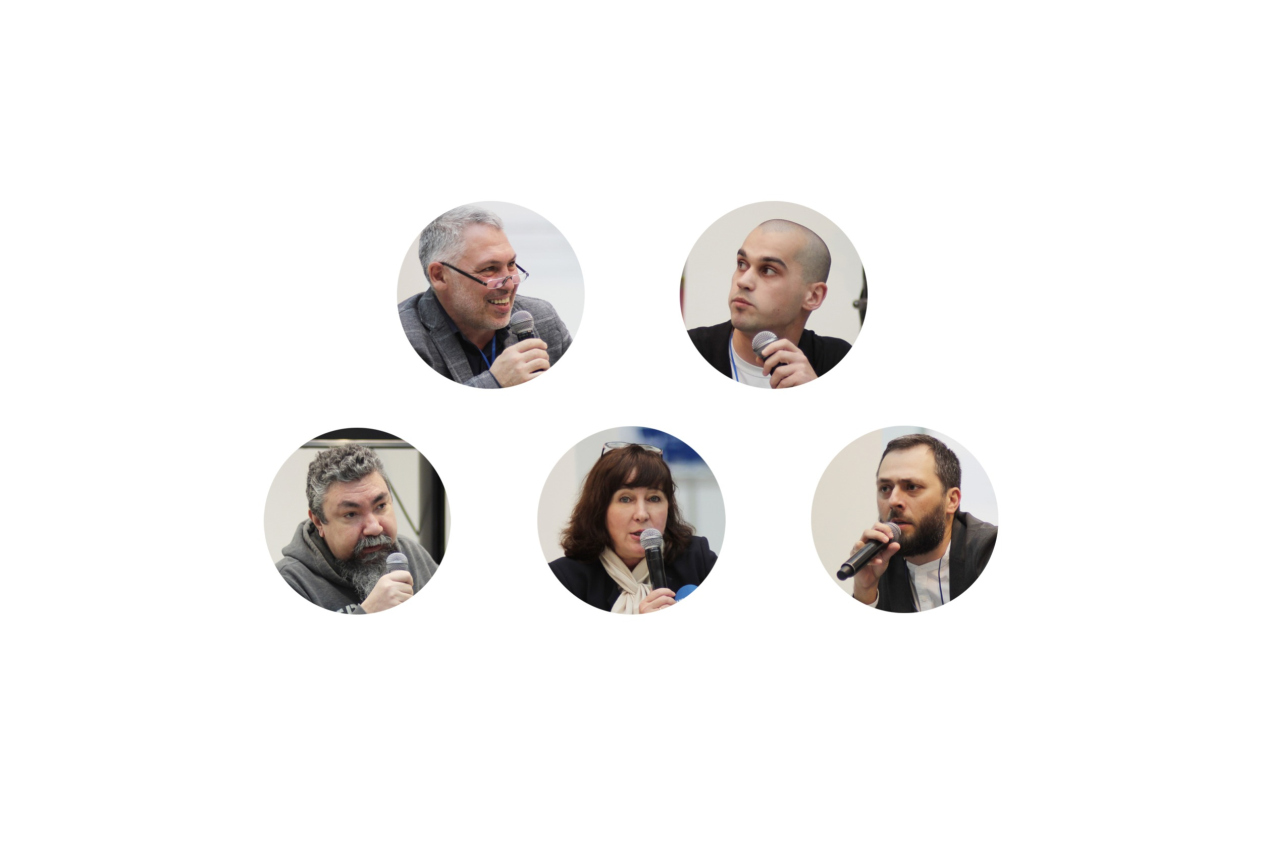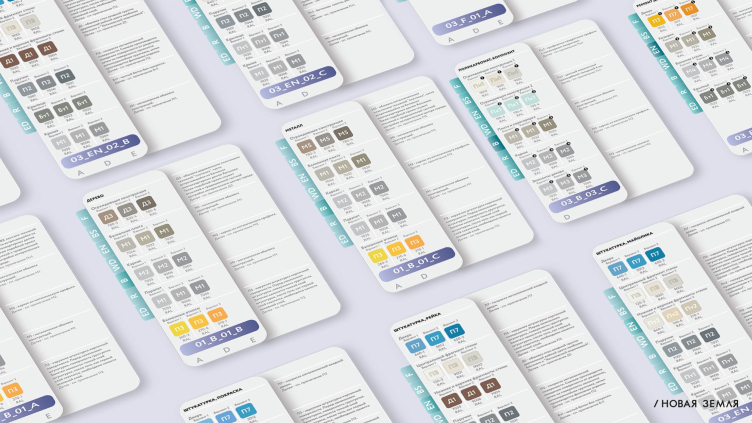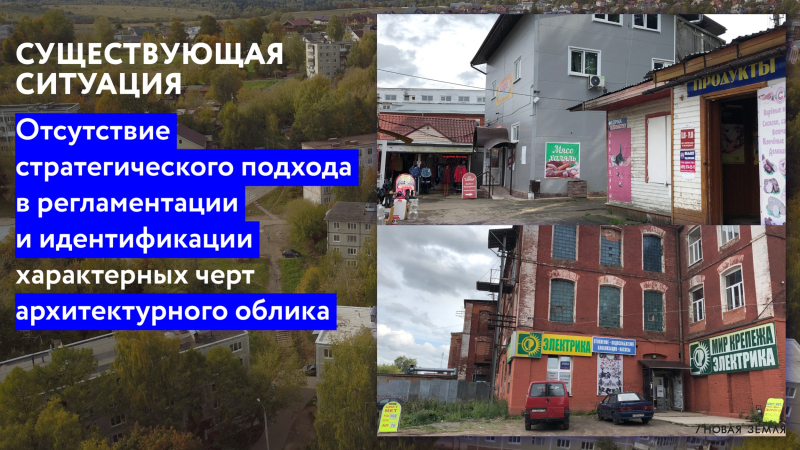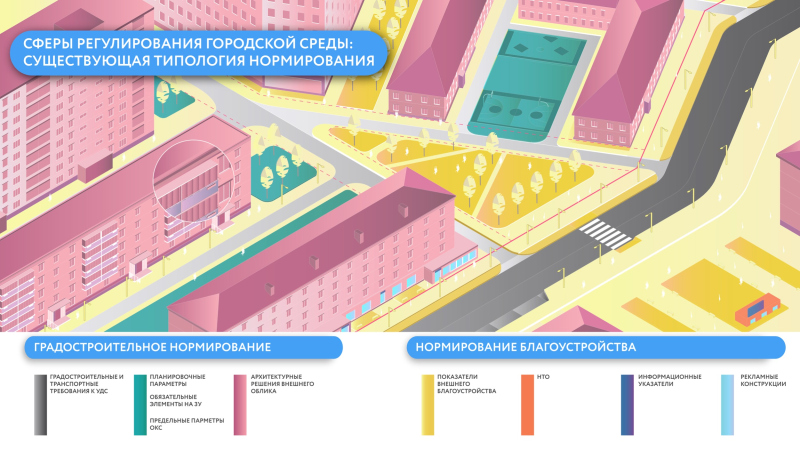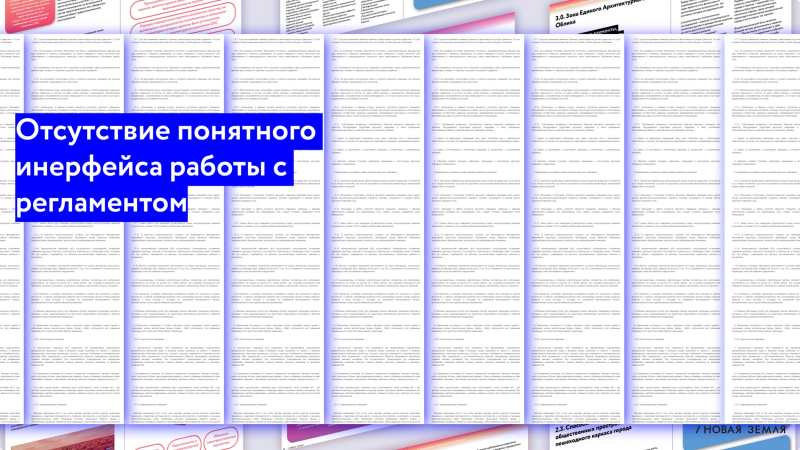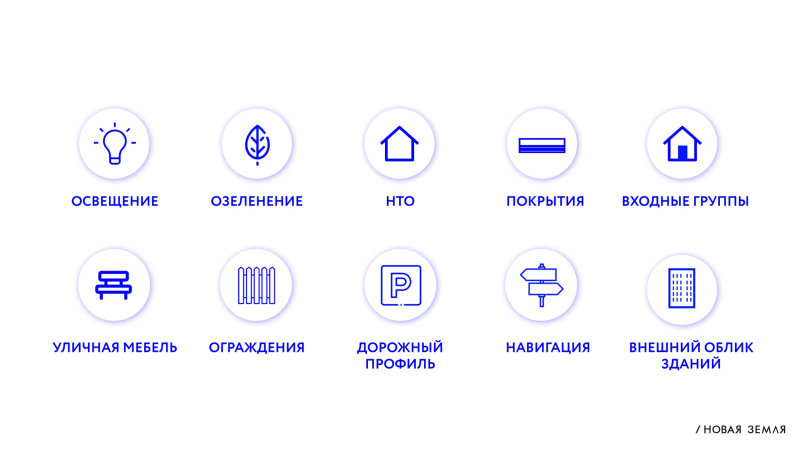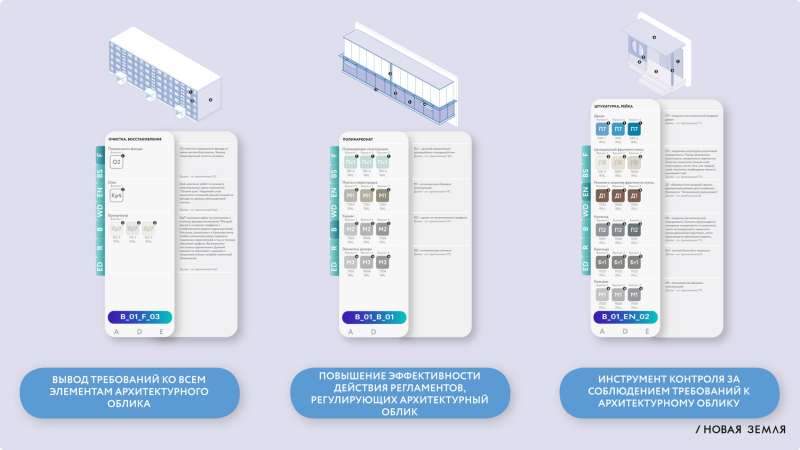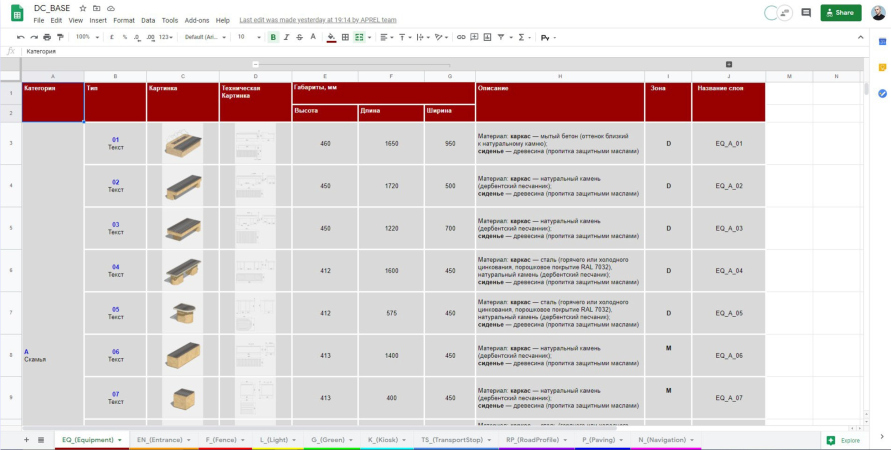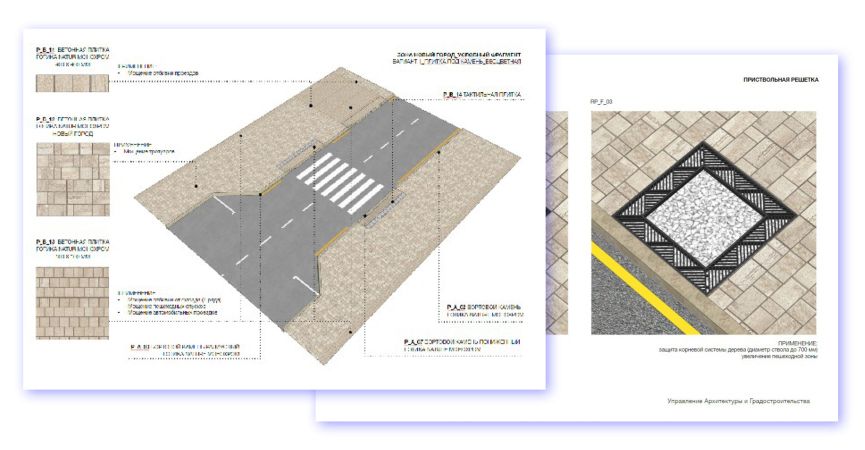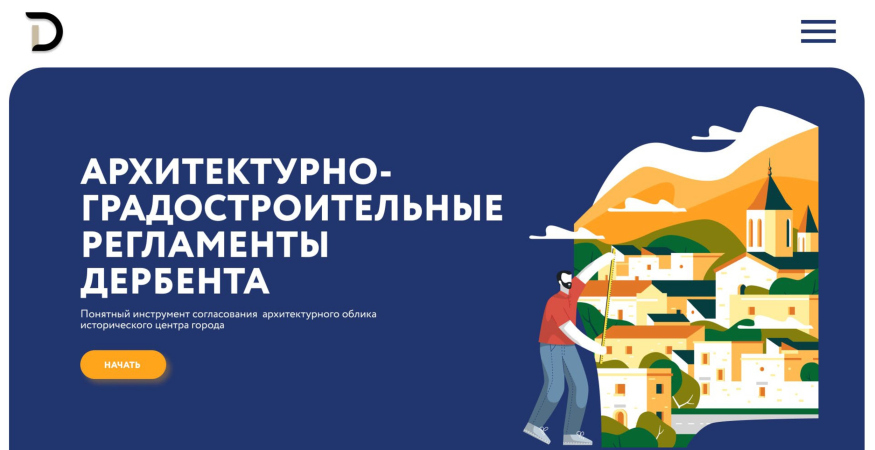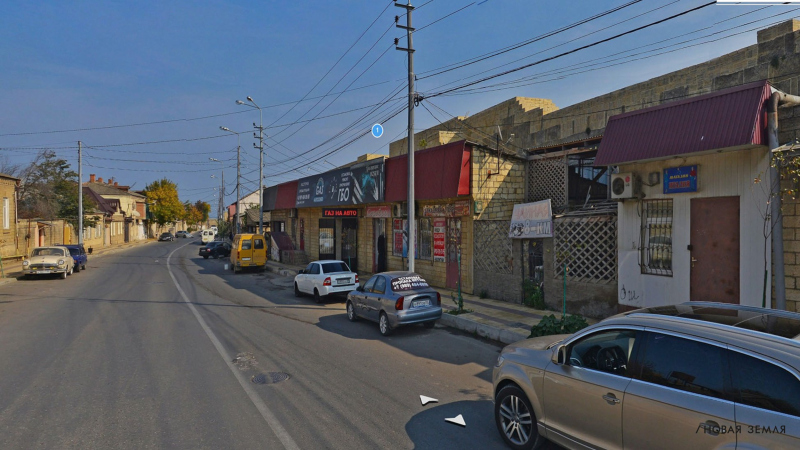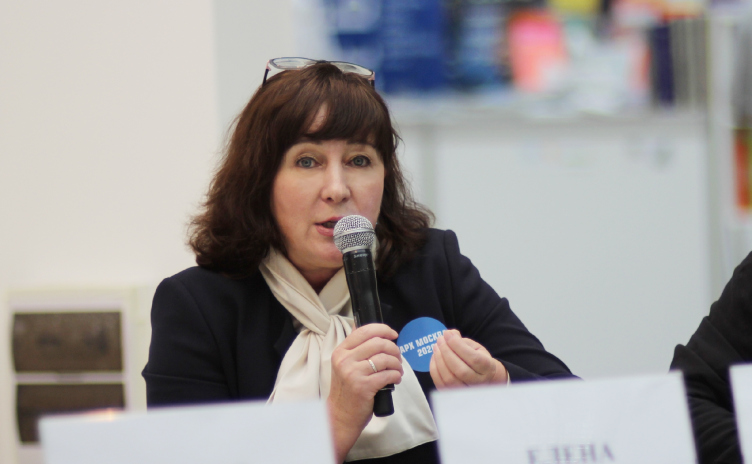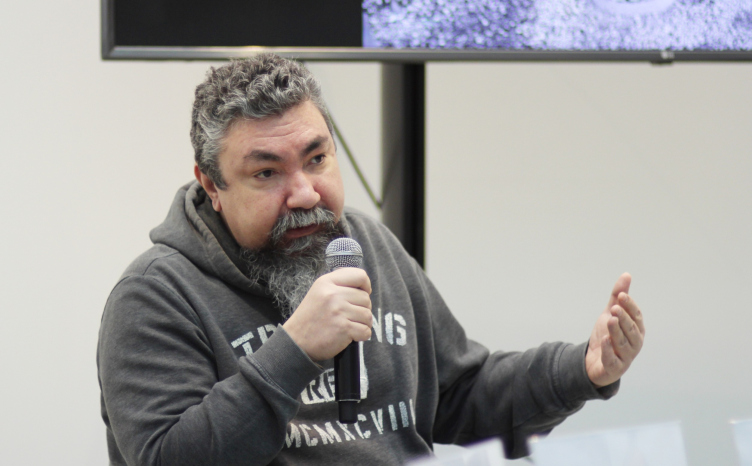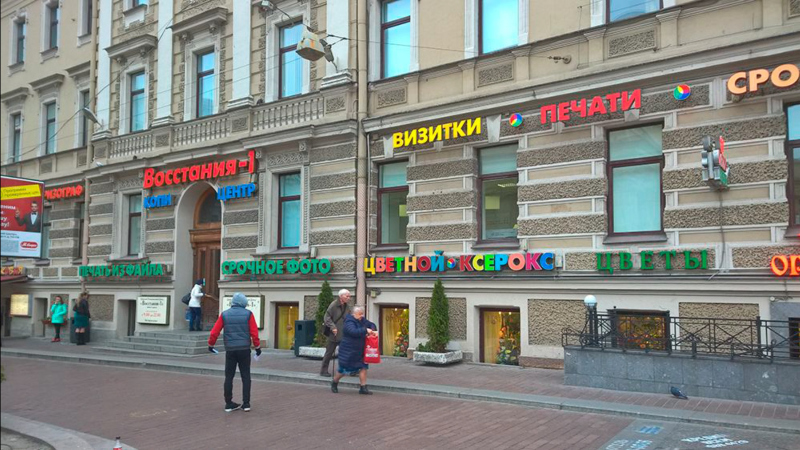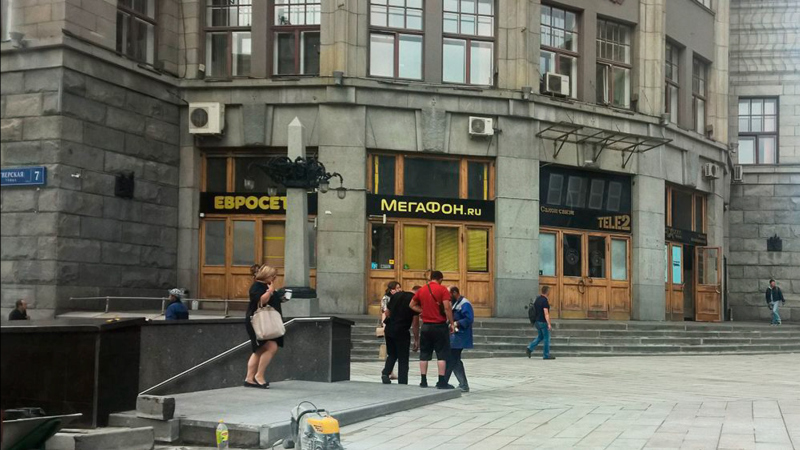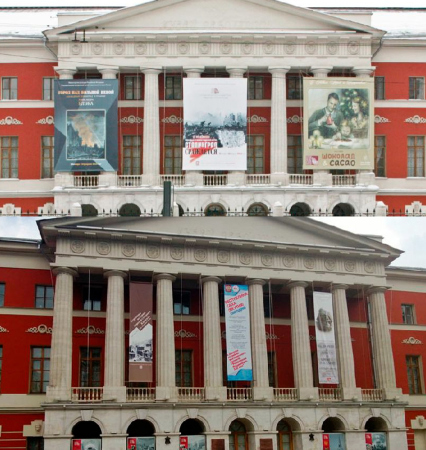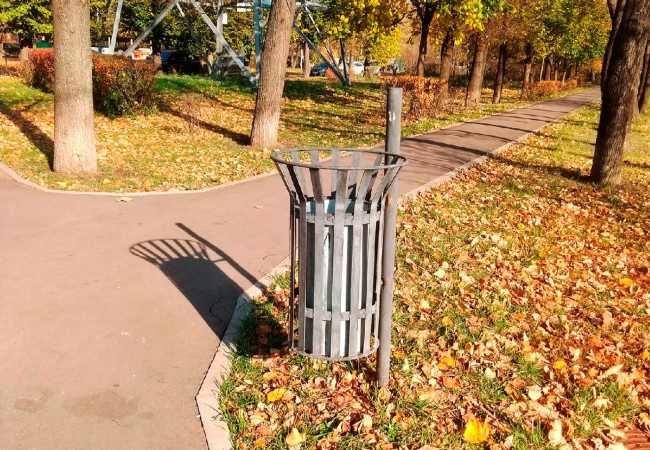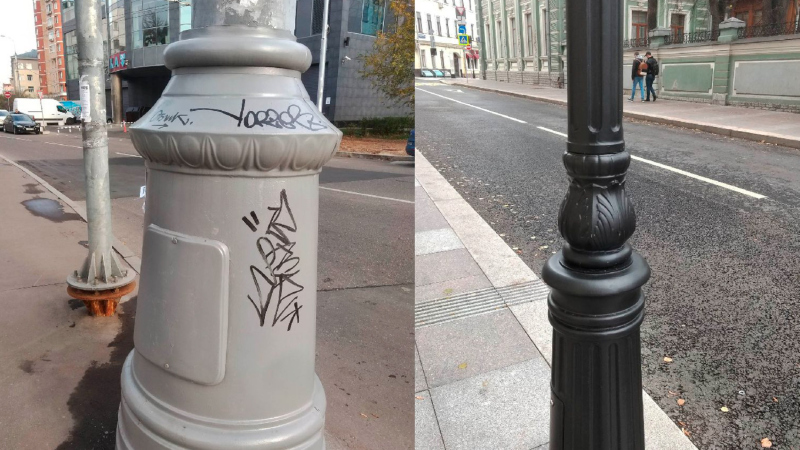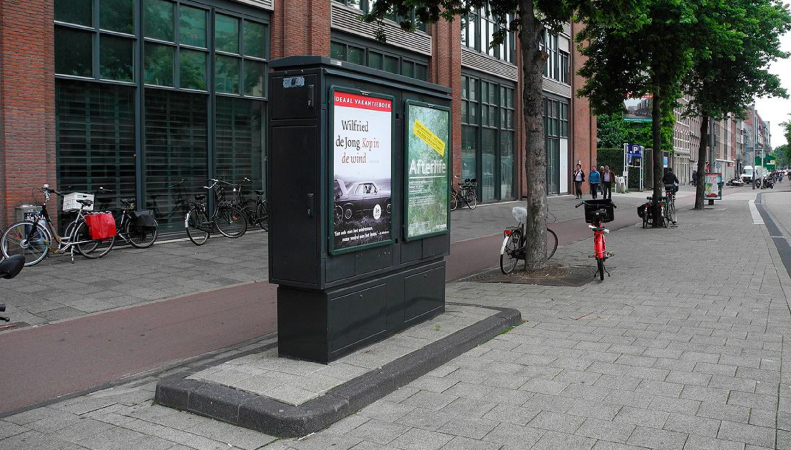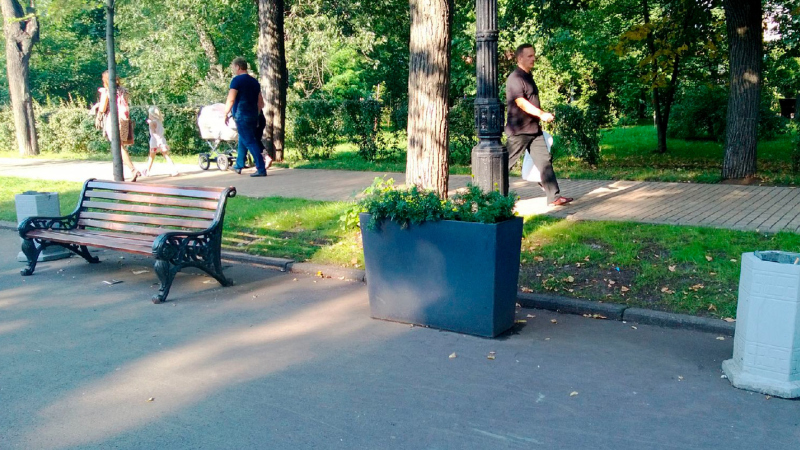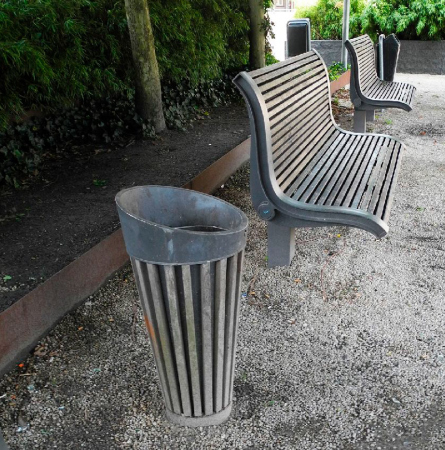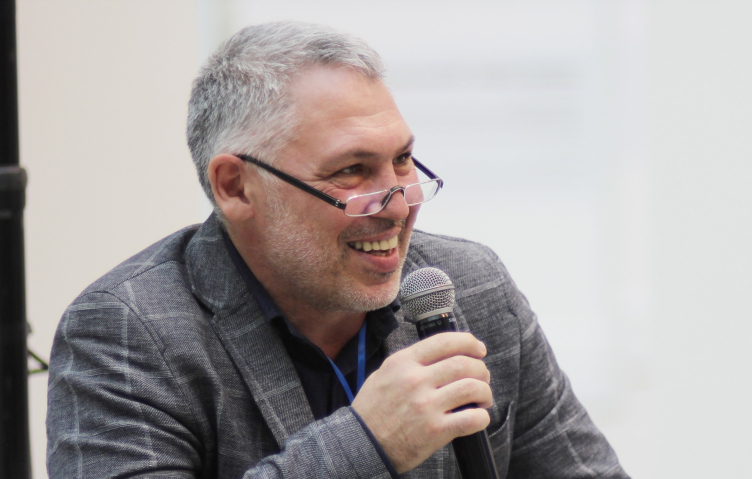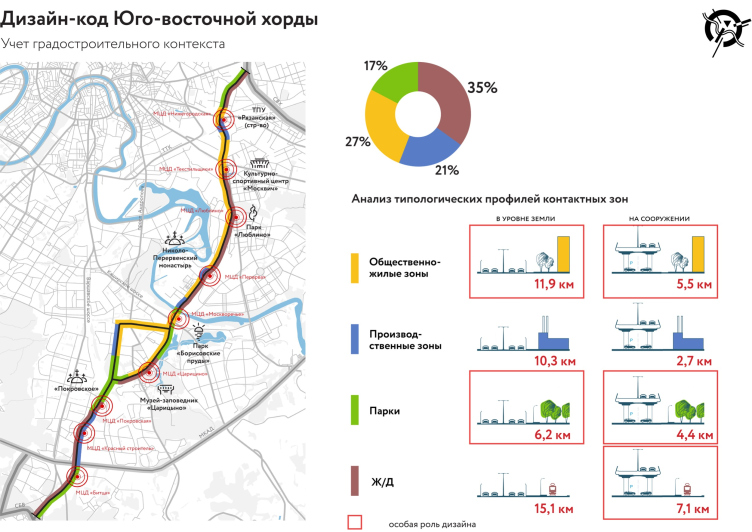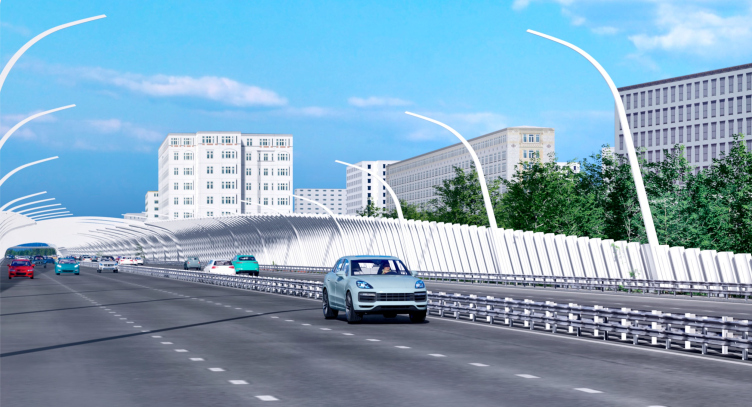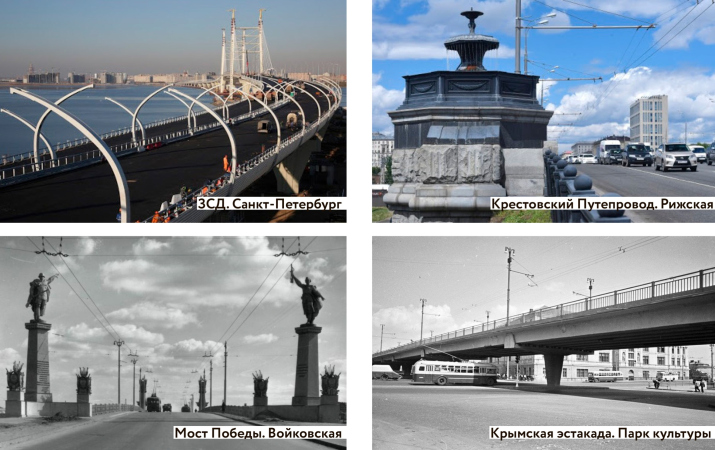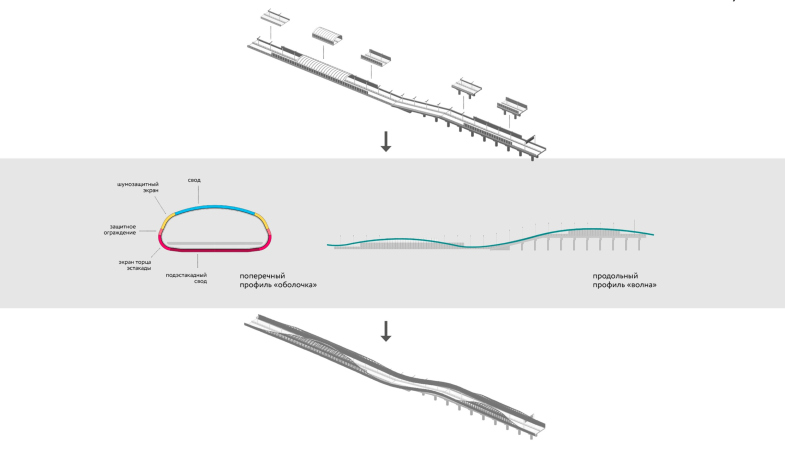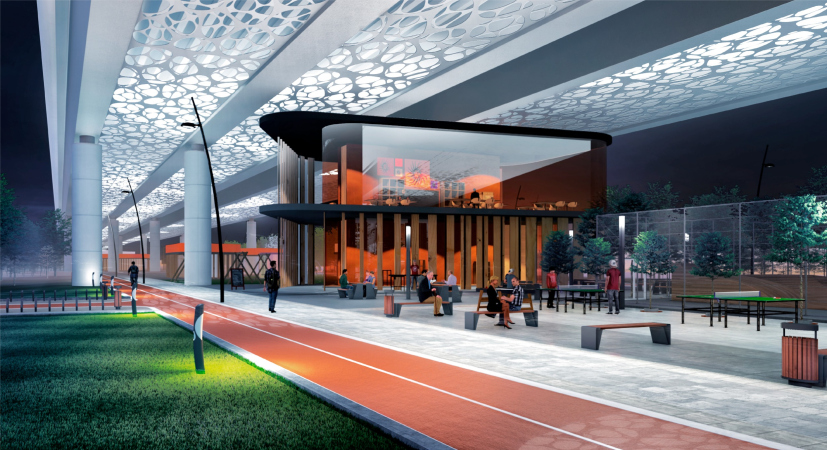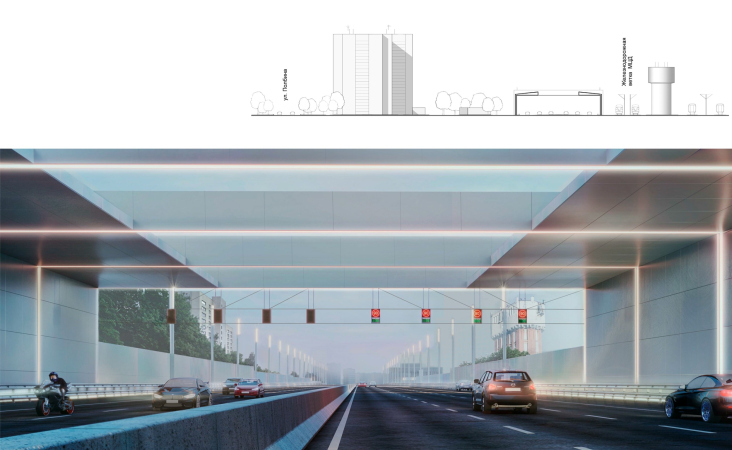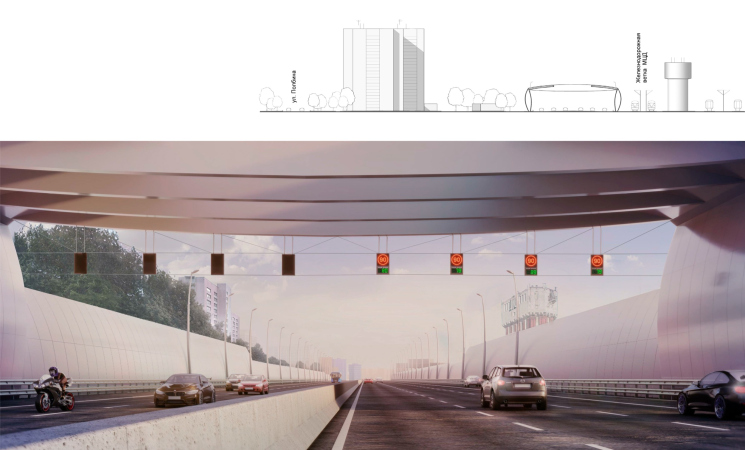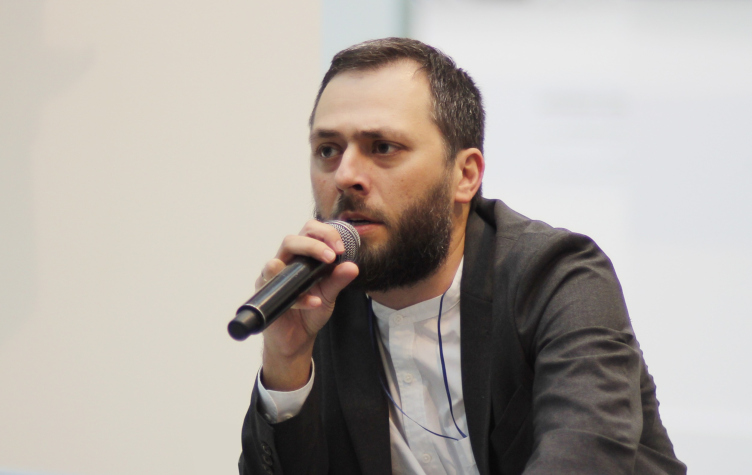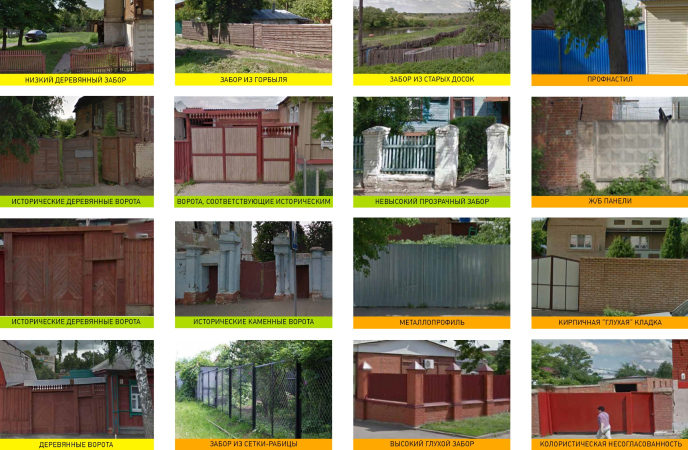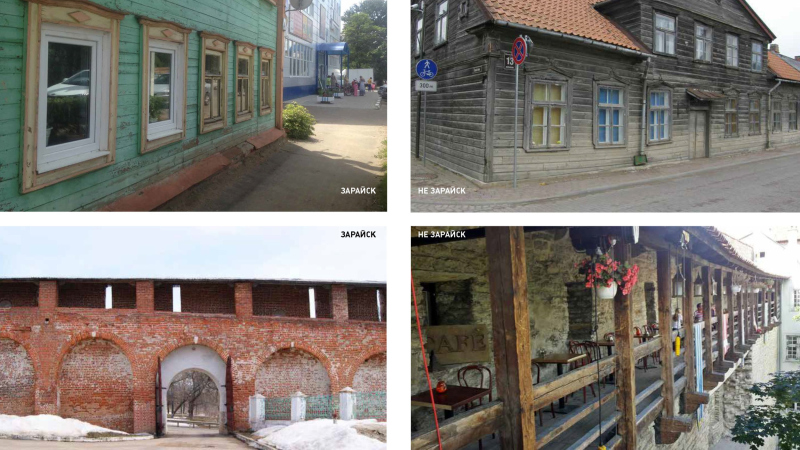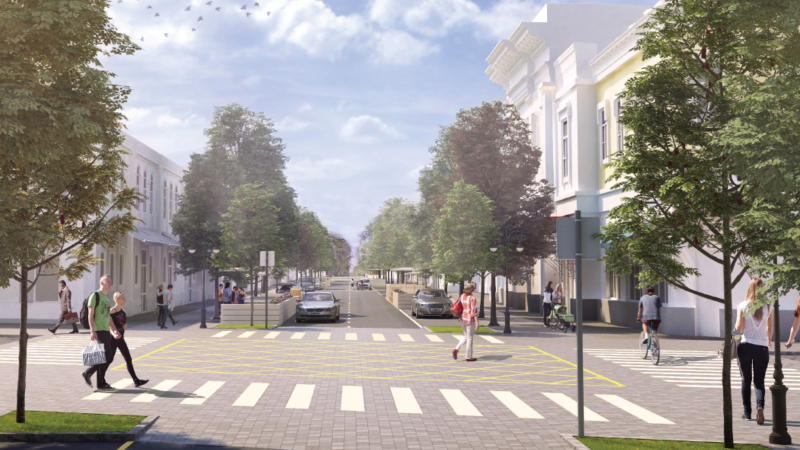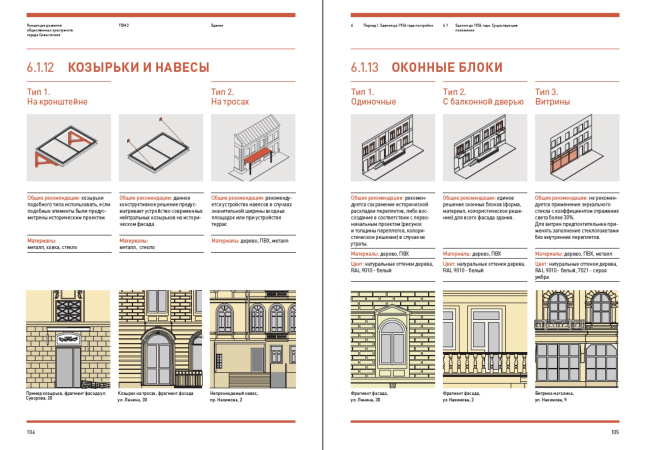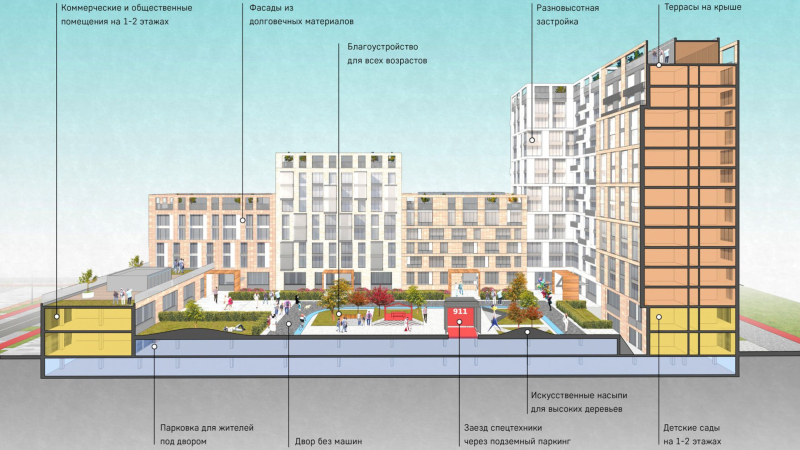The booth of Genplan Institute of Moscow at ArchMoscow 2020
Copyright: Photograph: Archi.ru
The topic of renovation is broad, not to say immense. Currently, it is actively developing in Moscow; in addition, the last couple of years have witnessed an active discussion on the prospects that renovation has on a national scale – so, chances are, we are in for renovation of all (or almost all) of our cities.
This is why the other discussion, initiated by Genplan of Moscow, called “Design code of town planning projects: order vs visual noise”, one way or another can be considered to be a continuation and development of the renovation theme stated earlier. All the more so because the moderator of the discussion, Vitaly Lutz, the head of the Agency for Perspective Projects of Genplan Institute of Moscow, started the discourse by stating the framework of the topic as being maximally broad, referring to the urban space in its entirety: “...the projects of planning the territory for renovation purposes now contain such a notion as town code. The subject penetrates deeper, and we see just how relevant it is.”
Convenient Regulations
The story of Artem Nikitin from the company Novaya Zemlya developed the idea: the message became a call for a “strategic approach in the field of regulation and identification of the characteristic features of the architectural appearance of our cities.” Part of the strategy that Novaya Zemlya is proposing became the convenience of perception of these regulations by everyone who must implement them and make them become a reality.
Artem Nikitin
The leading architect of the branch of digital solutions in urban planning, Novaya Zemlya.
Artem Nikitin demonstrated developments for the Moscow region, Irkutsk, and Derbent. The purpose of these regulations is not just imposing certain restrictions but also proposing a convenient interface for complying with them. Today, recommendations on urban planning oftentimes look like a monster-sized bureaucratic document that is hard to read – Artem Nikitin emphasizes – Novaya Zemlya turns them into a user-friendly web application with up-to-date usability.
Regulating the city environment. An example of user interface
Copyright: © Novaya Zemplya / presentation
Both the application and the spreadsheet demonstrated by Artem Nikitin include all the available components of the urban environment: streetlights, outdoor furniture, information structures, and so on. The target audience of Novaya Zemlya can be conditionally divided into three categories: first of all, these are the municipal officials, then city environment designers, and, finally, the residents themselves. The latter is particularly important for Derbent as a city where low-rise construction prevails: a resident or a store owner will easily find all the guidelines and the restrictions prescribed by the new design code, and send their design project for the approval by the authorities directly from the application.
So far, the proposed systems are still in a beta mode – even though in Derbent the designers are already implementing and using one of the interfaces that were showcased at the convention – by and large, the proposal makes perfect sense: the more understandable the rules, the easier they are to obey.
***
Freedom and Meanings
Elena Chuguevskaya
General Director of Giprogor Institute
In contrast to the story of Artem Nikitin, who, as we saw above, presented programs for small cities such as Derbent or Khotkovo, Elena Chuguevskaya, director of the institute, which celebrated its 90th anniversary last year, immediately spoke about large cities and raised the issue of diversity and the degree of flexibility of solutions that should be described by the regulations. “In our institute, we have a big discussion – what is our attitude towards pre-existing buildings? Do we issue strictly protective regulations or do we leave some room for “metabolic” changes in the environment? How do we set the delta of variability when planning hard constraints? Because it’s not always enough to just pick an element from the catalogue – simply because you cannot “securely enter everything into some sort of catalogue”.
At the same time, the director of Giprogor noted: “our masters in the thirties, forties, and fifties, when they were preparing the master plans, would graphically draw the downtown part at least. Which means that the city was originally created as a space. We need to bring that back”.
Thus, Elena Cuguevskaya called for a balance between freedom and restrictions, insisting at the same time on the necessity to think whole parts of the city as integrated architectural projects, going from the general to the particular, without dwelling on the sets of admissible elements, which in themselves do not provide the integrity of the solution. In conclusion, the director of Giprogor emphasized the importance of preserving the meanings and images, which “any city consists of”, and which can be represented by some historical details or some town planning specifics.
Looking to achieve the desired degree of flexibility, Giprogor divided construction into four morph-types: 1) zone of redevelopment; 2) zone of stabilization (historical construction); 3) zone of development (new construction);4) zone of conservation. As a practical case, they named the system of public spaces in Sevastopol, developed by the institute.
***
Devil in the details
Erken Kagarov
Art director of Art. Lebedev Design Studio
The presentation by Erken Kagarov was directly devoted to city environment elements, i.e. something that is usually associated with its design code: benches, trash cans, streetlights, and billboards – their design and compatibility, as well as examples of improving the appearance of city signs, which was done by Art. Lebedev Studio in collaboration with Moskomarkhitektura. It is popularly known that MKA has long been struggling for visual purity and uniformity, specifically when it comes to billboards, and Erken Kagarov gave a few examples of solving such tasks in the “before and after” format.
Before and after. Tverskaya Street. The design code. Yet-unused possibilities. Fonts regulated by height
Copyright: © Art. Lebedev Studio / fragment of the presentation
Just as meaningful was the part of the presentation, in which Erken Kagarov criticized the existing practices of advertisement placement – specifically, on the facades of museum buildings – as well as the shapes of outdoor trash cans and benches, oftentimes totally mismatched because they are done by different agencies. “Everything that the housing and public utilities service lays their hands on and up painted green” – Erken Kagarov said, emphasizing that some neutral color, such as gray or black, would look far more appropriate because it suits any season and does not immediately catch the eye.
Erken Kagarov proposed a few more useful ideas of public small architectural forms. Specifically, according to him, narrow lamp posts with a textured surface are vandal-proof because drawing on a textured surface is inconvenient, and, besides, magic markers are usually black, and you cannot see black on black, can you?
Possibly, creating some specially designated department, for example, the department of Urban Environment, which would handle such issues, could be a solution to some of the problems- recapitulated Vitaly Lutz on Erken Kagarov’s presentation.
***
Moscow: the design code for individual territories
Sergey Glubokin
Deputy Chief of the Office of the Architectural Council of the Committee for Architecture and Urban Planning Moscow
Sergey Glubokin mentioned the design codes of the European cities, specifically London, where, in addition to small architectural forms, signs, and billboards, a whole number of other aspects is regulated, down to the buildings’ outward appearance. Expressing some doubt as to whether something like this could be possible in Moscow, which is chiefly odds and ends, Glubokin, however, gave the example of ZILART as a case of integrated reconstruction with a single design code, which, as is known, was developed by Yuri Grigoryan. In ZILART, it is not just the signs that are subject to regulation, but also the facade materials, the percentage of glazing, and the landscape design, which, nonetheless, does not limit the architects’ creative freedom.
Sergey Glubokin also mentioned the design code of the city outpatient clinics, recently developed by MKA: “even if a company cannot design a top-notch project, within such a code it cannot fall below a certain bar”. Another example is the design code of the Alabushevo industrial park in Zelenograd, developed by ATRIUM in collaboration with Moskomarkhitektura.
***
Design for a highway
Vitaly Lutz
Head of the Agency for Perspective Projects of Genplan Institute of Moscow
As for his own presentation “Design code for transport infrastructure”, Vitaly Lutz dedicated it to the roads of the nation’s capital, and specifically to the new highway “Southeast Expressway” 15 km long, which is now being built in Moscow. As a successful case, Lutz named Saint Petersburg’s West High-Speed Diameter, and named two most important goals in designing such highways: humanization of the “brutal” technological construction and creating a recognizable image.
Design code for the transport infrastructure projects.
Copyright: © Genplan Institute of Moscow / fragment of the presentation
Vitaly Lutz proposed a set of elements, from which the graphic design of a highway could be constructed: bridge pylons, lampposts, side walls of road junctions, vaults, and noise screens. Then Vitaly presented projects of designing the expressway. The first one was created in collaboration with the bureau of Timur Bashkaev, and is essentially a longitudinal wave.
Project of the Southeast Expressway. Design code for the transport infrastructure projects.
Copyright: © Genplan Institute of Moscow / fragment of the presentation
In this project, the space beneath the road junction becomes public, with cafes and Ping-Pong tables. There are also a minimalist and “natural” version, and quite unexpected one – with ornaments: all three were made in collaboration with the architectural company “Progress” headed by Peter Anurin.
Thus is quite a new approach to designing flyover bridges and the spaces underneath them – true, the latter are already used today, but mostly for car washes and parking municipal vehicles. It would be good to include these spaces into active city life; in fact, just as renovating industrial parks, developing the spaces underneath raised highways would enrich the city fabric with new fragments, finding the resources inside, and not outside the city.
***
The fence in a small city
Nikita Asadov
An architect, the partner of ASADOV architects
Nikita Asadov came up with an ingenious presentation entitled “Design code and things to wear with it”, likening architecture to clothes and design to dress code. He shared about his experiences of working in small cities and spoke about the sore Russian issue of fences and plastic windows, which, regretfully, tend to replace valuable historical woodwork in privately owned buildings.
How do we go about implementing new ideas? Nikita Asadov believes that the best way to do it is by showing examples of “what is good and what is bad” – the slides that the company prepared for the town of Zaraisk. For example, a picket fence or a wooden gate in the spirit of the old city is good; a corrugated fence is bad.
In the “Dry Cleaning” section, Nikita Asadov presented regulations for facade elements developed for the city of Sevastopol: canopies and window blocks, appropriate in this or that place. All you need to do is enter a specific building into the regulations software, and it will display the possible options. If, however, we are talking about new construction, setting the algorithm is even simpler – here Nikita Asadov showed a project that ASADOV Architects proposed for a pilot renovation project.
During the final discussion, Artem Nikitin once again emphasized the importance of a visual understandable explanation over a set of documents 500 pages long. Erken Kagarov reminded that Art. Lebedev Studio also contributed to developing the design code for Zaraisk – and it was there that the authors deemed it possible to support the idea of a wooden picket fence in a modern city. At the same time, in the European cities – Erken Kagarov emphasized – different design codes are developed for different areas of the city, based upon the specifics of the area: “this is normal; this is what makes a city diverse and interesting”.
***
Summing up the discussion, one can say that a design code is an elastic term: one of its poles is standardization and regulation of the most basic elements of the city space, from flowerbeds to benches and trash cans; the other is full-fledged architectural proposals and concepts that consider part of the city fabric as an integral work of art. In both cases, it is all about bringing chaos to order, but while the former proposes “school” rules and cares about the easiness of their implementation and obedience, the latter considers the city from the point of view of an architect that creates a new city.
How strongly are these two approaches at odds with each other, if at all? Possibly, the answer lies in recognizing the value of diversity. The urban planners of our time, in addition to asserting the necessity of regulations, still value identity and diversity of possible options, and even speak about the necessity of defining a “delta” for freedom of self-expression. Only such freedom, let’s face it, can ensure the diversity that has been so much spoken about. Because excessive regulation is at best fraught with monotony.
Hence, it logically follows that the main virtue of the modern author of the town planning code is not to cross the line, leaving space for self-expression, particularly in small towns. Convincing and explaining, not ordering, and if we are to introduce rules, then so that their observance is convenient. And – which is just as important – inviting artists, architects, and designers. In this sense, it is essential that the discussion featured not just sets of rules and regulations but also architectural projects of various scales, including those that were developed in collaboration with urbanists, yet demonstrating individual search for the unique form.
